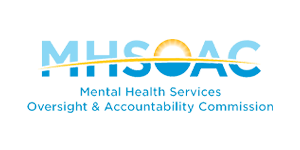- SAS案例_SAS统计软件的客户涵盖世界五百强中的知名企业 | SAS
- California's Mental Health Services Oversight and Accountability Commission (MHSOAC)

Transforming mental health care in California, turning data into insight

SAS helps the MHSOAC validate success and funding of programs and services.

Better health outcomes via advanced analytics
MHSOAC achieved this using • SAS® Analytics • SAS® Data Management
California’s Mental Health Services Oversight and Accountability Commission uses analytics and data management to better serve residents and increase community well-being
California is the most populous state in the US, home to 40 million people. It is famous for picturesque beaches, redwood forests, vineyards and the entertainment capital of the world. As one of the nation’s most diverse states, California comprises an eclectic mix of people, cultures and lifestyles. Yet, one thing that unifies Californians is prioritizing mental health.
A recent California Health Care Foundation report indicates that the top health care priority for Californians is making sure people with mental health needs can get treatment. In 2004, the state took a major leap forward in expanding mental health care when voters approved the Mental Health Services Act (MHSA). The MHSA was enacted into law in January 2005 and transformed the state’s public mental health system through its focus on innovative programming, and prevention and early intervention to reduce the risk of mental health needs becoming severe and disabling. It has generated approximately $15 billion over the last 15 years for county-based mental health services and programs across the state.
The Mental Health Services Oversight and Accountability Commission (MHSOAC) supports transformational change across mental health and service systems. The Commission provides oversight and accountability for MHSA funds. In this vein, the MHSOAC holds public mental health systems accountable while promoting wellness, recovery and resilience for people who are living with mental illness.
To objectively evaluate MHSA programs and better serve the community, the MHSOAC’s Research and Evaluation Division leads the charge and relies on aggregating and linking data across public systems. “In order to improve the mental health of Californians, we need to know what works and what doesn’t,” says Dr. Itai Danovitch, Commissioner and Chair of the Research and Evaluation Committee. “We need to understand where services are being delivered, who receives them, what is effective and what falls short. Our goals are premised on the capacity to conduct effective evaluations and to continuously respond to the insights they produce.”
Data is the currency for mental health transformation. By bringing disparate data together, we have the power to integrate these systems and tell a broader story about how we are helping individuals live their best lives.Dr. Dawnté Early Chief of Research and Evaluation MHSOAC
Integrating data leads to a broader understanding of mental health services and client outcomes
Dawnté R. Early, PhD, MS, is the Chief of Research and Evaluation at the MHSOAC. Dr. Early saw an opportunity to combine data sets across the state to gain a broader view of the impact mental health services had on improving client outcomes. “We had a vision to integrate data systems that have never talked to each other at a statewide level,” Dr. Early says. “It’s hard to know if you’re having an impact when you’re only looking at a sliver of the story. We needed to see the whole picture.”
To expand this understanding, the Commission invested in advanced analytics and data management solutions from SAS. With these solutions in place, the MHSOAC links data from different public data systems including health care and hospital services, employment, education, criminal justice and vital statistics. A major project Dr. Early’s team has led is linking mental health data to criminal justice data to evaluate whether intensive mental health services provided in the community keep people out of jails and prisons.
Evaluating the impact of mental health services on criminal justice outcomes
Surprisingly, the largest psychiatric institutions in California are not hospitals or health centers – they are jails and prisons. According to one Stanford report, more than 30% of prisoners receive treatment for a serious mental disorder, an increase of 150% in nearly two decades.
A major aim of the MHSA is to treat people with mental health needs before they end up in the criminal justice system. One way that counties try to accomplish this is through MHSA-funded Full Service Partnership (FSP) programs. These intensive and coordinated programs – which include housing, transportation, medical care, education and employment – are designed to give people who are living with a mental illness what they need to support their recovery to live independently.
“These ‘whatever-it-takes’ programs ensure that individuals are less likely to go into the criminal justice system or to state hospitalization because they’re getting the care and assistance they need to live healthier, productive lives,” Dr. Early explains. “Ultimately, it’s a benefit to the mental health consumer, the greater community and the state because fewer people end up going to prison or state hospitals, both of which cost a lot of money to house individuals.”
Though many people advocate for these partnerships, the MHSOAC wanted to understand the true impact of FSP programs, which can cost more than $20,000 per person. Do these programs actually keep people living with a mental illness out of the criminal justice system? If so, what’s the financial impact to the state?
To understand the connection between FSP programs and the justice system, Dr. Early and her team used SAS to link FSP and Department of Justice (DOJ) data. The Commission studied more than 64,000 FSP participants and corresponding justice data of approximately 81,000 arrests. The data was analyzed in three time periods: 12 months before FSP participation, the time during FSP participation and 12 months post-FSP participation.
The analysis showed a strong association between FSP participation and reductions in arrests. Program participants saw a 47% reduction in arrests and, even more remarkably, a 69% reduction among clients who had previous high criminal justice involvement.
“Linked data helped us validate that mental health programs can drastically reduce arrests among those who have mental health disorders,” Dr. Early says. “This is huge for helping the state to better understand where we should invest our money.”
MHSOAC – Facts & Figures
1 in 6
adults in California experience a mental illness
59
local mental and behavioral health boards and commissions
$2.5 billion
allocated annually to mental health services in California
Applying statewide lessons locally
As an aggregator of statewide mental health information, the Commission aims to build knowledge-sharing communities among the local programs. With only 49 employees, the MHSOAC does not have the capacity to evaluate every program. Instead, it analyzes data from across the state to form clusters of programs with similar goals and attributes.
The Commission launched the Transparency Suite in 2019 to allow California counties, mental health consumers and their families, policymakers, advocates, lawmakers and others to share knowledge that can potentially improve mental health outcomes for California residents in need of services. The Transparency Suite has many data reporting components, including a fiscal reporting tool that allows users to visualize MHSA spending and a tool that inventories MHSA programs.
“SAS allows us to engage with statewide data in ways that individual counties can’t do,” explains Dr. Brian R. Sala, Deputy Director for Evaluation and CIO of the MHSOAC. “It’s really helping us build a ‘how to do better’ ecosystem.”
Once the Commission forms clusters of like-minded programs, it can facilitate connections between program stakeholders to get them talking about what works and what doesn’t. This engagement will improve program performance across the state by allowing similar programs to learn from one another.
“Data is key to advancing California’s mental and behavioral health systems,” says Jim Mayer, Chief of Innovation Incubation at the MHSOAC. “We’re working on a continuous improvement framework that the counties will actually help build, so they can articulate from their perspectives what they need to drive innovation.”
To further advance the Commission's mission to monitor the effectiveness of MHSA programs and support quality improvement, it has begun integrating two decades of data from the California Employment Development Department and the California Department of Education to mental health data. Linked data will allow the Commission to examine the impact of mental health services on major outcomes across the life course such as school failure and unemployment.
“Using our evaluation team’s capabilities to correlate large data sets, we will be able to better understand the real-world outcomes of our interventions in ways that have not been available to us in the past,” says Commissioner Ken Berrick, Vice Chair of the Commission’s Research and Evaluation Committee. “The impact will be continuous improvement of interventions and outcomes.”
Applying analytics to this collective data will provide a clearer picture of how MHSA programs and services are impacting local communities across California. Lessons learned at the state level will be shared at the local level to improve how money is spent and how policies are constructed.
“We’re not the enforcement agency, but we’re trying to shine a light on where improvement is needed,” Dr. Sala adds. “Data helps us come with carrots, not the stick. Ultimately, data allows us to develop relationships, build the evidence to understand what’s going on, and share the insights to help us all do better.”
'Data is the currency for mental health transformation'
The MHSOAC is championing the concept that data paired with community involvement is essential for success. “We go out into the community to make sure that we actually understand people’s needs,” Dr. Early says. “We lift up the community voice and the voices of mental health consumers and their family members into our work and our recommendations.” The Commission also uses data to reduce the stigma associated with mental illness, advocating there’s no shame in seeking help. In fact, it can be empowering – a step toward recovery.
“Data is the currency for mental health transformation,” Dr. Early says. “By bringing disparate data together, we have the power to integrate these systems and tell a broader story about how we are helping individuals live their best lives.
“We’re dispelling myths and misconceptions by getting accurate and reliable information out to the community about our partnerships, and the programs and services that are available for all counties in the state,” Dr. Early concludes. “We’re normalizing the fact that a lot of us are mental health consumers, and that’s OK, because mental health is essential to overall health.”
本文中所展示的成果取决于文中所述的特定场景、业务模式、数据输入和计算环境。每位SAS客户的体验都因其业务和技术特性而不同,请勿将本文观点视为通用观点。实际的成本节约、成果和效果最终取决于每位客户的实际配置和条件。SAS不保证每位客户都能取得本文类似的成果。SAS仅对SAS的产品和服务提供保证,请参阅SAS的产品服务质保条款,本文中提及的内容不能视为质保条款。客户可以按照合约商定的条款分享SAS软件实施项目的成功案例,相应的品牌和产品名称归属相应的公司所有。
